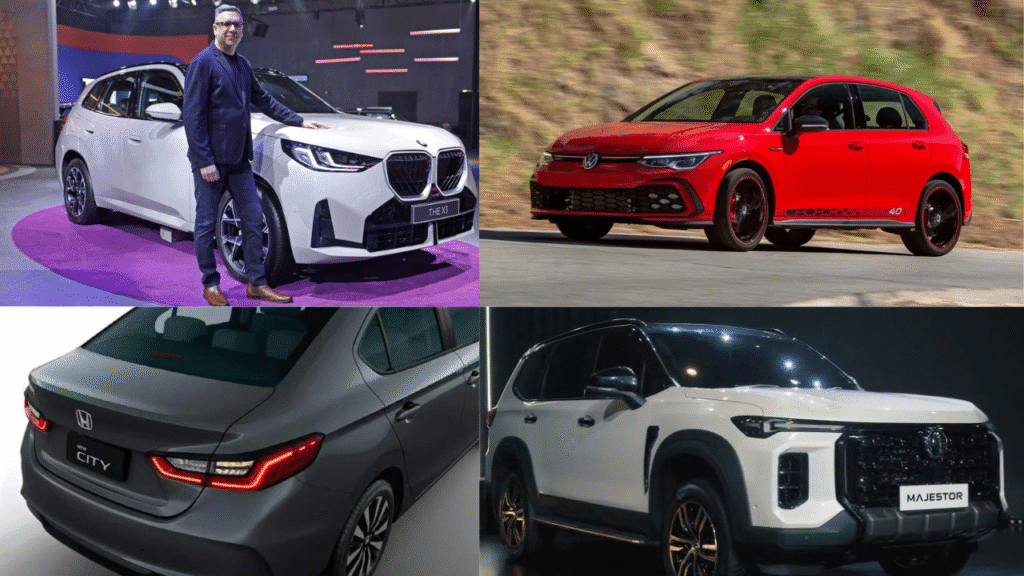Vehicle Retail Sales in August Up 2.84%: FADA Sees Stronger Growth Ahead on GST Cuts
India’s "vehicle retail sales" grew 2.84% in August 2025, according to FADA. With expected GST rate cuts, auto experts anticipate a strong sales boost during the festive season.
Vehicle Retail Sales in August Up 2.84%, Rise Expected in September Amid GST Cuts: FADA
India’s automobile retail sector recorded a modest yet encouraging growth in August 2025. As per the latest data released by the Federation of Automobile Dealers Associations (FADA), vehicle retail sales across the country rose by 2.84% compared to the same month last year.
Vehicle Retail Sales in August Up 2.84%: FADA Sees
Industry players believe that the recent reduction in Goods and Services Tax (GST) rates, coupled with the onset of the festive season, will further accelerate momentum in September and the months ahead.
August 2025: Positive Turn for Vehicle Sales
August usually marks the beginning of a transitional phase for the Indian automobile industry, with anticipation building toward seasonal demand during festivals like Onam, Navratri, and Diwali. This year, FADA’s report highlighted steady growth despite global uncertainties and supply chain challenges.
Passenger vehicles witnessed stable demand, driven by new model launches and attractive financing options. Two-wheeler sales picked up pace in both urban and semi-urban regions, reflecting increased consumer confidence as fuel prices remained under check. Commercial vehicle sales also showed healthy recovery with the pick-up in infrastructure projects and freight activities.
FADA President remarked that August’s performance is encouraging and lays the groundwork for a stronger festive season, provided consumer sentiments remain supported by stable interest rates and favorable policies.
GST Cuts: Major Relief for the Auto Sector
A highlight of the month has been the government’s decision to cut GST rates on certain automobile categories. This move directly reduces costs for buyers and improves margins for manufacturers and dealers. The auto sector, which had been advocating for tax rationalization for several years, welcomed this policy shift.
Lower GST has made entry-level cars and two-wheelers more affordable, widening the scope for first-time buyers. The luxury segment too is expected to benefit as new pricing can attract aspirational customers who were hesitant due to high taxes. Dealers anticipate increased footfall in showrooms in September, especially with festivals boosting buying intentions.
Festive Season Outlook: A Demand Boost Ahead
Historically, September and October are crucial months for the automobile industry in India as customers prefer making big-ticket purchases during auspicious occasions.
With improved affordability after GST adjustments, more families are considering upgrading their vehicles.
Passenger Vehicles: Greater interest is expected in compact SUVs and mid-size sedans, categories that have been leading market growth in recent years.
Two-Wheelers: Rural demand is anticipated to rebound with better monsoon conditions boosting incomes. Urban buyers, especially the youth, are expected to drive demand for premium motorcycles.
Commercial Vehicles: Construction and logistics expansion are likely to fuel steady demand for trucks and light commercial vehicles.
Dealers also noted that financing institutions have announced festive season loan offers with low interest and extended repayment tenures, creating further incentives for potential buyers.
Buyer Sentiments and Market Dynamics
Consumer sentiment, a key driver of the auto industry, is showing gradual improvement. A combination of rising disposable incomes, expansion of credit availability, and government-backed policies are shaping a favorable environment.
Unlike past years when supply chain bottlenecks and semiconductor shortages restricted availability, manufacturers this year are better prepared to meet festive demand.
The used-car segment also remains robust as aspirational buyers opt for pre-owned vehicles, especially in tier-2 and tier-3 cities.
Digital retailing has further accelerated growth, with online platforms making vehicle bookings more seamless.
Challenges to Watch
Despite positive developments, FADA cautioned that the industry cannot be complacent. High inflationary pressures, fluctuating fuel prices, and global economic uncertainties may affect overall demand.
For commercial vehicles, freight cost volatility and diesel pricing remain critical concerns.
Moreover, rising competition in the electric vehicle (EV) segment is both an opportunity and challenge. EV adoption is growing but infrastructure limitations and high upfront costs may deter some buyers in the short term.
However, government incentives and private sector investments in charging solutions are gradually paving the way for stronger momentum in the EV landscape.
Long-Term Industry Transformation
While short-term sales performance is encouraging, the bigger picture is even more dynamic. India is expected to be among the fastest-growing automotive markets in the next decade. The combination of government policies, consumer aspirations, and technological innovation is set to transform the sector.
Electrification of urban mobility remains a key priority.
Advanced connected car technologies are becoming popular with buyers demanding smart, tech-enabled features.
Rural penetration of automobile ownership is also accelerating due to improved road infrastructure and digital awareness.
Industry experts believe that India’s automobile story is not just about volume growth but also about evolution toward sustainable, technology-friendly, and consumer-driven business models.
Conclusion
The 2.84% rise in August retail sales has given the Indian automobile sector renewed optimism.
With GST cuts acting as a catalyst and the festive season expected to unlock pent-up demand, September 2025 could mark the beginning of a stronger growth cycle.
Both two-wheelers and passenger vehicles are poised to benefit, while commercial vehicles may see steady momentum.
